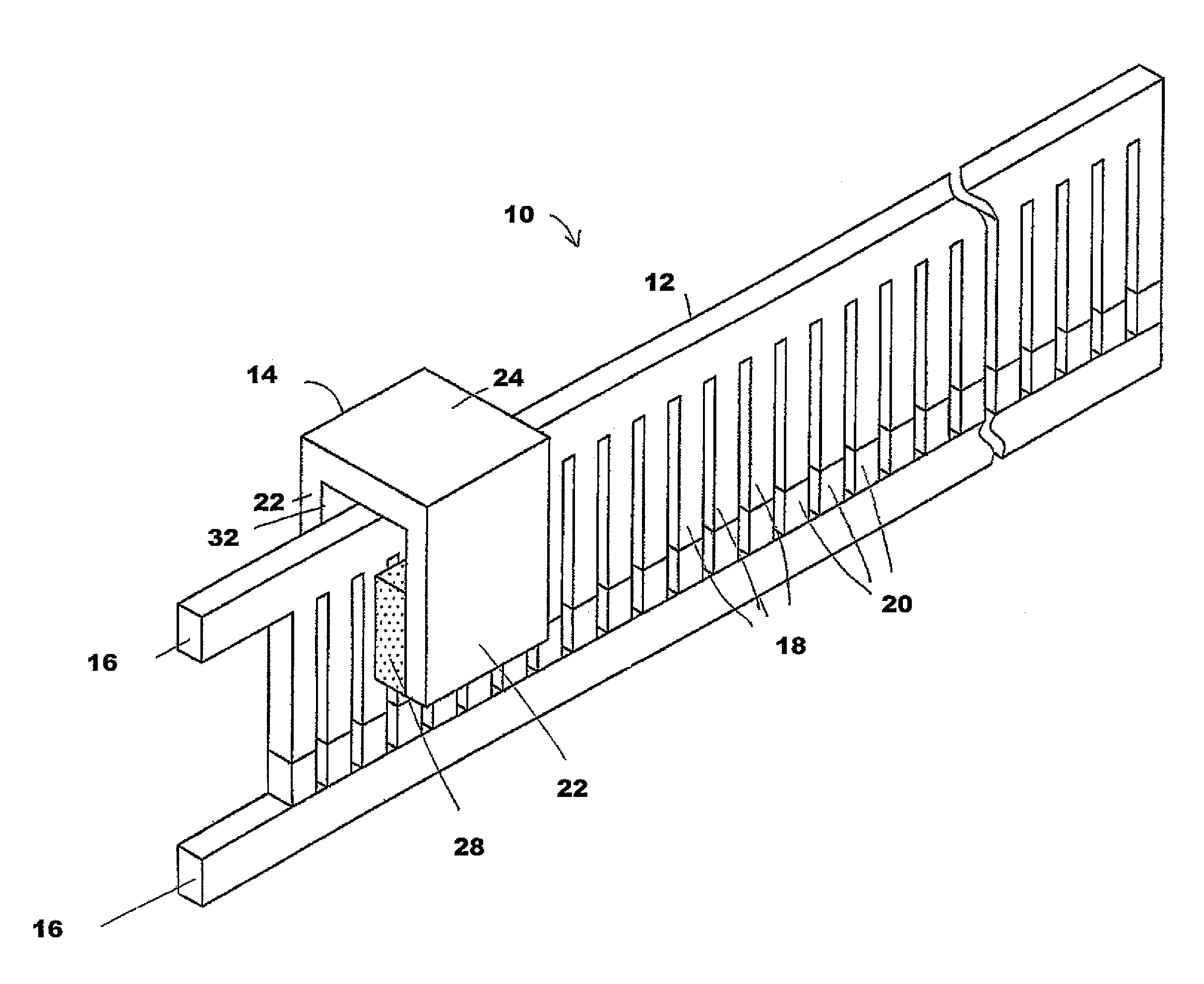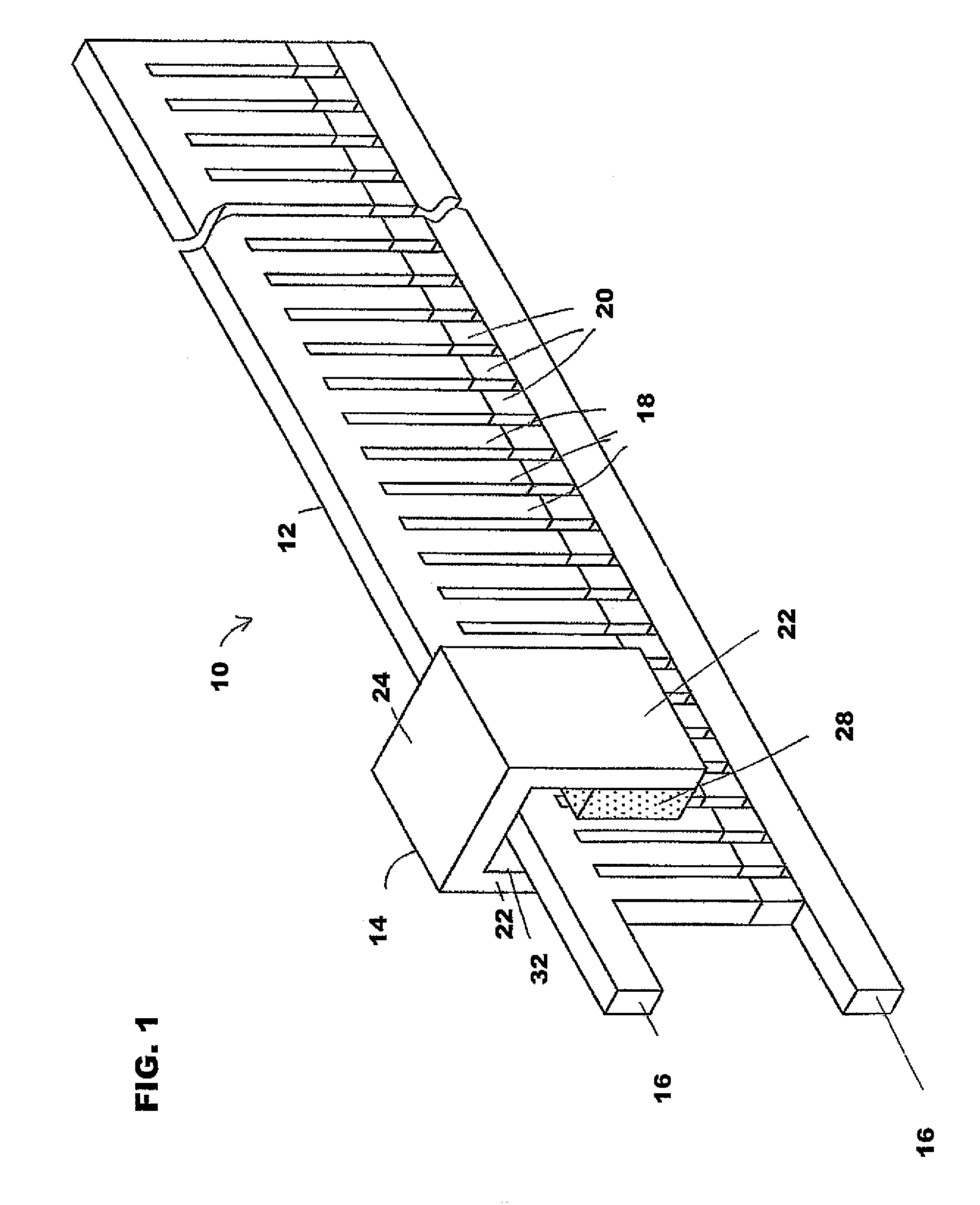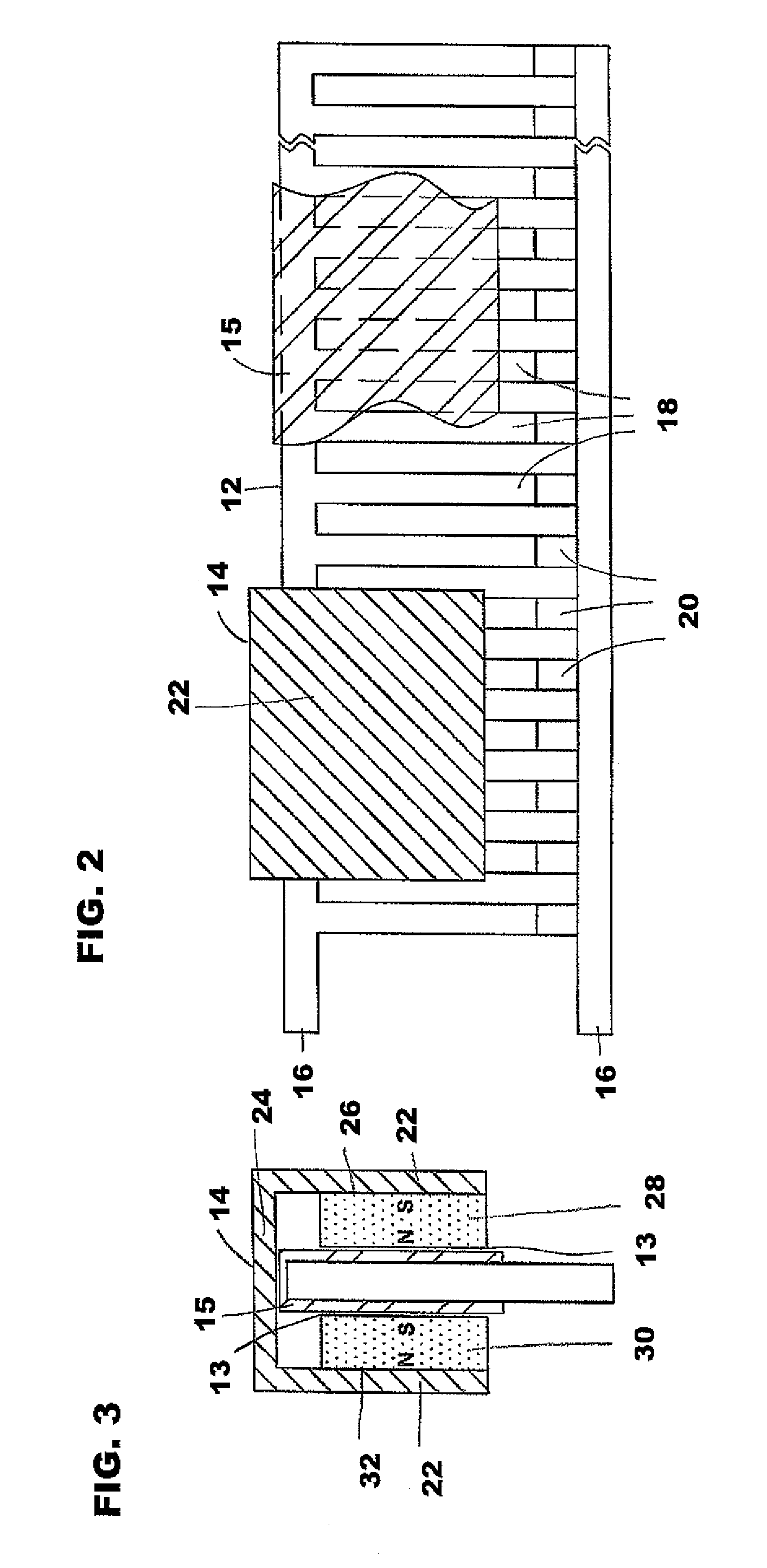Channel gun magnetic launcher
a magnetic launcher and channel gun technology, applied in the direction of weapons, white arms/cold weapons, weapons, etc., can solve the problems of large and rapid wear of rails, difficult to use, and many rail guns can only be used for a single application or a small number of applications, so as to achieve not tremendously heated and destroyed, simple structure, and the effect of not wasting energy
- Summary
- Abstract
- Description
- Claims
- Application Information
AI Technical Summary
Benefits of technology
Problems solved by technology
Method used
Image
Examples
example 1
[0058]As an example of the embodiment shown in FIG. 4, in calculations with an extended length for the electric ladder and without accounting for air friction, if the conductive rungs are spaced approximately one-eighth (⅛) of an inch apart the switches 20 are capable of being activated and deactivated by the controller 17 at 1 MHz. If the length of the projectile is then set at one (1) inch, a muzzle velocity of the projectile can reach approximately 16,000 miles per hour (mph) or 7 kilometers per second (kmps), which gives the projectile enough kinetic energy to launch it out to space, for example. With such a configuration, each switch may be a 1 MHz MOSFET switch that can easily be activated from the front end of the projectile and can easily be deactivated by the rear end of the projectile. Thus, if the total time which the switch would be activated is 3.6 μs for the one (1) inch projectile to travel, the speed of the projectile would be 1,000,000 / 3.6*1=277,778 inches per secon...
example 2
[0059]As en example of the embodiment described above in FIGS. 1-3 and 5, in an ideal scenario wherein there is no friction, the magnetic force F can be calculated using the Lorentz equation, which is reformatted below as Equation B, in SI units,
F=L*I*B (Equation B)
wherein the magnetic force (F) is measured in Newtons, the length (L) is measured in meters, the current force (I) is measured in amperes, and the magnetic inductance force (B) is measure in Tesla. If in the single turn ladder structure of the first illustrative embodiment, as shown in FIGS. 1-3 and 5, there is a 0.1 meter long Neodymium-iron-born (NIB) magnet with 1 Tesla magnetic field strength, applying 5,000 Amps DC current going through, then: F=L*I*B=0.1*5,000*1=500 Newtons. If the projectile weighs 1 kg, then the acceleration force (A)=Force / mass (F / m)=500 / 1=500 meters per second squared. Thus if the projectile's beginning velocity is zero, then after one (1) second, the velocity after one (1) second=Acceleration*...
example 3
[0060]As an example of the embodiment described above in FIG. 20, if instead of the single turn ladder structure of the first illustrative embodiment, we have a the looped conductive rung ladder structure, such as that shown in FIG. 20, and there is a 20-turn loop per rung structure, a 0.1 meter long Neodymium-iron-born (NIB) magnet with 1 Tesla magnetic field strength, and applying 5,000 Amps DC current going through, then the calculations work out as follows: F=L*I*B=(20*0.1)*5,000*1=10,000 Newtons. If the projectile weighs 1 kilogram, then the acceleration force (A)=Force / mass (F / m)=10,000 / 1=10,000 meters per second squared. Then in order to reach the muzzle speed of 7,000 meters per second, it will take 0.7 seconds. If we are using an elongate electric ladder, the length of the ladder would be S=½ Acceleration*time2(½A*t2)=½*10,000*0.72=2500 meters or 2.5 km.
[0061]While the above-described embodiments of an electromagnetic launcher according to the invention include a guide with...
PUM
 Login to View More
Login to View More Abstract
Description
Claims
Application Information
 Login to View More
Login to View More - R&D
- Intellectual Property
- Life Sciences
- Materials
- Tech Scout
- Unparalleled Data Quality
- Higher Quality Content
- 60% Fewer Hallucinations
Browse by: Latest US Patents, China's latest patents, Technical Efficacy Thesaurus, Application Domain, Technology Topic, Popular Technical Reports.
© 2025 PatSnap. All rights reserved.Legal|Privacy policy|Modern Slavery Act Transparency Statement|Sitemap|About US| Contact US: help@patsnap.com



